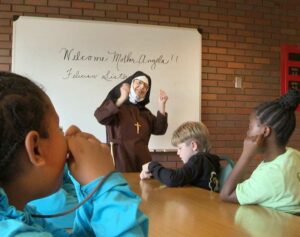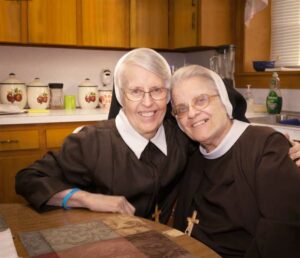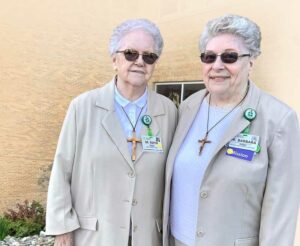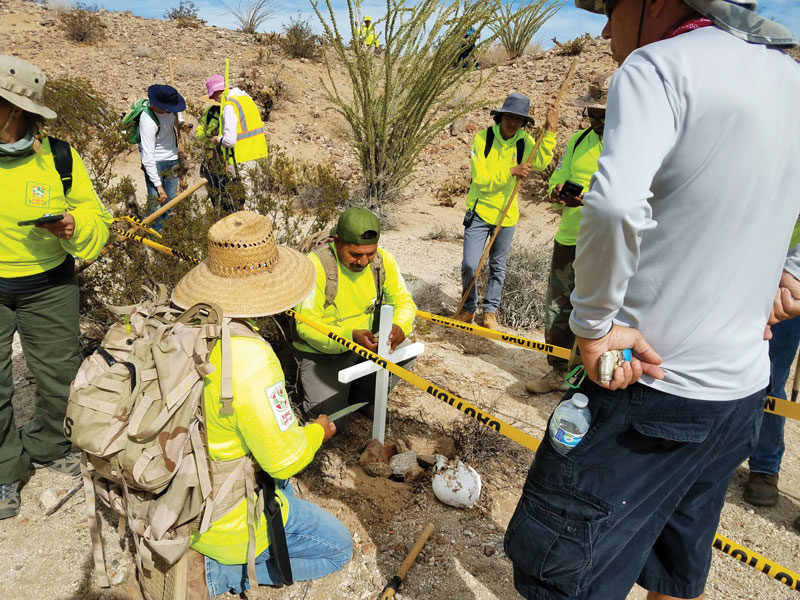
Every bone has a story. In these hostile and treacherous lands, our migrant brothers die trying to give their families a better future.
Ely Ortiz, Co-founder, Águilas del Desierto
For three years, I’ve been ministering with the grassroots nonprofit organization Águilas del Desierto, Eagles of the Desert. Our mission is to save lives at the border— as many lives as possible.
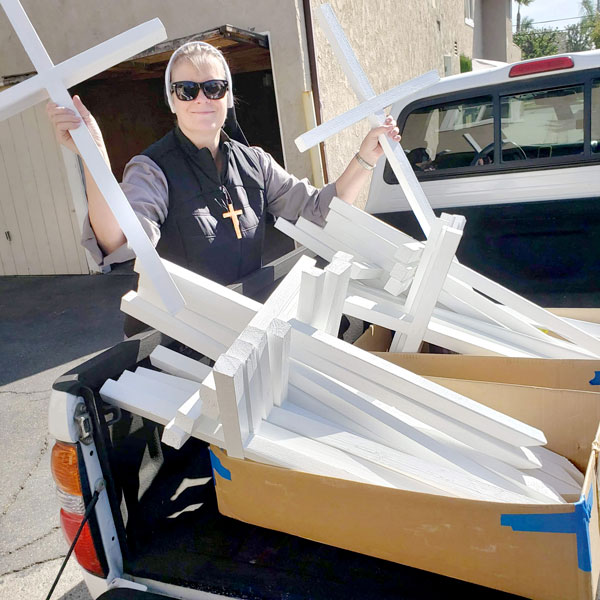
Since 1996, more than 5,000 people have lost their lives in deserts along the border between the United States and Mexico. I first learned about the humanitarian crisis at the border from a New York Times photo essay about Águilas. When I looked for more information, I read stories about criminals, gang members, and drug dealers crossing into our country — I was confused. This was so unlike the story in the NY Times about men, women, and children losing their lives in a desperate attempt to cross the border.
I contacted Águilas and asked if I could participate in a search. I think I was hoping to learn which stories were true. I couldn’t accept that thousands of people were dying and it wasn’t all over the nightly news.
My first search was in Southern California, in the Ocotillo desert. Águilas received a call about a 19-year-old boy who had been missing for several weeks. The team leader pointed in the direction we were to walk and cautioned us to stay on that route or we would end up in Mexico. We were so close to the border that we set off the motion sensors buried beneath the sand.
The reality that we were searching for the remains of a 19-year-old boy hit home two hours later when a volunteer discovered a human skull lying in a gully. The scene became surreal as team leaders recorded the coordinates, took pictures for documentation purposes, and cordoned off the area.
I had never seen an actual human skull. I couldn’t take my eyes off it. This was proof that people are dying in our deserts. I think I was in shock.
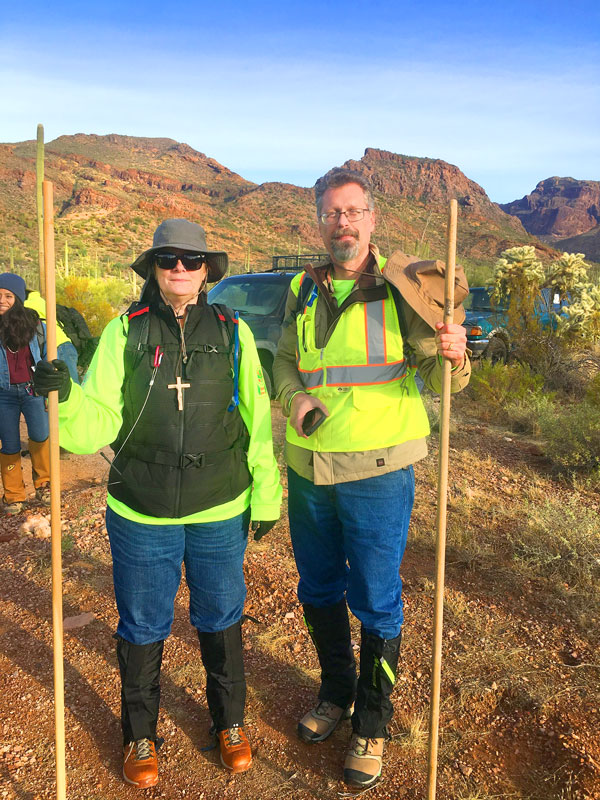
The remains were not the young man we were looking for. They belonged to a young woman, whose family and friends were probably still wondering where she was, hoping she was alive, praying for her safety, and hoping for some word of her whereabouts. This is a reality for so many families whose loved ones are missing — years and years of never knowing.
We reported the location of the remains to Border Patrol and continued the search. As the terrain became rockier, we had to climb up and down hills and boulders, searching niches, crags, and caves that crossers often use to escape the heat or conceal themselves from detection. Even on this overcast day, temperatures were in the 90s, and the rocks made it feel like an oven.
As I was wondering how anyone could survive these conditions, I looked ahead to the edge of a boulder and saw a child’s shoe. I thought it was just one more discarded item — we had seen so many abandoned belongings on our search —but as I looked closer at the shoe of a little girl, I realized there was still some of her foot inside. I recoiled in shock and disbelief. How could this be real? What had happened to end her little life?
The two bodies we discovered on my first search belonged to a woman and a child. This was how I witnessed first-hand the humanitarian crisis at the border.
As I wondered if the child’s mother or father had to watch their daughter die and then make the unbearable decision to stay with her body and die as well or leave her behind, my shock gave way to a deep anger. In my heart, there isn’t any scenario that could justify this loss of life. It is not okay that thousands are dying and almost no one knows about it.
In 2021, Águilas and their team of volunteers have rescued more than 30 people alive. Recently we rescued a family of eight, abandoned without food or water in the desert near the Texas border. This fall, we will embark on our yearly prevention campaign encouraging migrants not to cross the border. We will stop at every migrant shelter from Honduras to Mexico, speaking to migrants, warning them of the dangers, sharing the truth about the harsh deserts along the border, and asking them to “piensalo mucho” (think hard) about risking their lives.
Saving lives at the border is the mission of Águilas del Desierto. Each soul is precious and loved by God. Every search and rescue I participate in is away of saying that every life matters — and this is not okay.
Who Crosses the Border and Why? (Why they risk their lives)

Many border crossers are not single men but families. High rates of violence, corruption, and murder are a reality in El Salvador, Honduras, and Guatemala which reportedly have the highest homicide rates in the world. When a gang wants to recruit your son or daughter, there is nowhere to turn for help. The only recourse is to leave.
Gang violence, years of drought, and smugglers force starving and desperate families to risk everything for survival and in hopes of a better life.
Gia and Her Toddler
In Guatemala, Gia’s family lived in poverty without running water. After he was run over by a motorcycle, her son nearly died — no medical services were available. Leaving home to go to work or buy food had become too dangerous. Children were being abducted from Gia’s neighborhood, and she feared hers would be next.
To save her three children, Gia gathered her family and fled to the United States. She traveled with her toddler while her husband went separately with their 8- and 10-year-old children. In Mexico, Gia was assaulted and robbed. Penniless, tearful, and afraid they would drown, she and her toddler crossed the river on a small boat. They were cold when they reached the U.S.; their clothing was inadequate for the climate. Gia and her family have applied for asylum but live in fear that they will be deported and face certain death back in Guatemala.

